Almost all children have times when their behavior veers out of control. They may speed about in constant motion, make noise nonstop, refuse to wait their turn, and crash into everything around them. At other times they may drift as if in a daydream, failing to pay attention or finish what they start.
However, for some children, these kinds of behaviors are more than an occasional problem. Children with attention-deficit/hyperactivity disorder (ADHD) have behavior problems that are so frequent and/or severe that they interfere with their ability to live normal lives. These children often have trouble getting along with siblings and other children at school, at home, and in other settings. Those who have trouble paying attention usually have trouble learning. Some have an impulsive nature and this may put them in actual physical danger. Because children with ADHD have difficulty controlling their behavior, they may be labeled as “bad kids” or “space cadets.” Left untreated, more severe forms of ADHD can lead to serious, lifelong problems such as poor grades in school, run-ins with the law, failed relationships, substance abuse and the inability to keep a job.
What is ADHD?
ADHD is a condition of the brain that makes it difficult for children to control their behavior. It is one of the most common chronic conditions of childhood. It affects 4% to 12% of school-aged children. About 3 times more boys than girls are diagnosed with ADHD.
 What are the symptoms of ADHD?
What are the symptoms of ADHD?
ADHD includes 3 behavior symptoms: inattention, hyperactivity, and impulsivity. A child with inattention symptoms may have the following behaviors:
- Has a hard time paying attention, daydreams
- Does not seem to listen
- Is easily distracted from work or play
- Does not seem to care about details, makes careless mistakes
- Does not follow through on instructions or finish tasks
- Is disorganized
- Loses a lot of important things
- Forgets things
- Does not want to do things that require ongoing mental effort
A child with hyperactivity symptoms may have the following behaviors:
- Is in constant motion, as if “driven by a motor”
- Cannot stay seated
- Squirms and fidgets
- Talks too much
- Runs, jumps, and climbs when this is not permitted
- Cannot play quietly (video games do not count)
A child with impulsivity symptoms may have the following behaviors:
- Acts and speaks without thinking
- May run into the street without looking for traffic first
- Has trouble taking turns
- Cannot wait for things
- Calls out answers before the question is complete
- Interrupts others
What is the difference between ADD vs. ADHD?
ADD stands for Attention Deficit Disorder. This is an old term that is now officially called Attention Deficit Hyperactivity Disorder, Inattentive Type. More on this will discussed below.
Are there different types of ADHD?
Children with ADHD may have one or more of the 3 main symptoms categories listed above. The symptoms usually are classified as the following types of ADHD:
- Inattentive type (formerly known as attention-deficit disorder [ADD])—Children with this form of ADHD are not overly active. Because they do not disrupt the classroom or other activities, their symptoms may not be noticed. Among girls with ADHD, this form is most common.
- Hyperactive/Impulsive type—Children with this type of ADHD show both hyperactive and impulsive behavior, but can pay attention.
- Combined Inattentive/Hyperactive/Impulsive type—Children with this type of ADHD show all 3 symptoms. This is the most common type of ADHD.
How can I tell if my child has ADHD?
Remember, it is normal for all children to show some of these symptoms from time to time. Your child may be reacting to stress at school or home. She may be bored or going through a difficult stage of life. It does not mean he or she has ADHD. Sometimes a teacher is the first to notice inattention, hyperactivity, and/or impulsivity and bring these symptoms to the parents’ attention. Sometimes questions from your pediatrician can raise the issue. Parents also may have concerns such as behavior problems at school, poor grades, difficulty finishing homework and so on. If your child is 6 years of age or older and has shown symptoms of ADHD on a regular basis for more than 6 months, discuss this with your pediatrician.
What causes ADHD?
ADHD is one of the most studied conditions of childhood but the cause of ADHD is still not clear at this time. The most popular current theory of ADHD is that ADHD represents a disorder of “executive function.” This implies dysfunction in the prefrontal lobes so that the child lacks the ability for behavioral inhibition or self-regulation of such executive functions as nonverbal working memory, speech internalization, affect, emotion, motivation, and arousal. It is believed that children with ADHD lack the right balance of neurotransmitters, which are specific chemicals in their brains, that help them to focus and inhibit impulses.
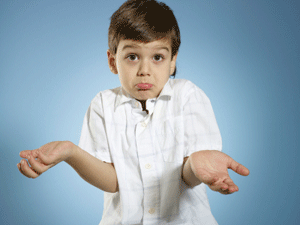
Research to date has shown the following:
- ADHD is a biological disorder, not just “bad behavior.” In a child with ADHD, the brain’s ability to properly use important chemical messengers (neurotransmitters) is impaired.
- A lower level of activity in the parts of the brain that control attention and activity level may be associated with ADHD.
- ADHD appears to run in families. Sometimes a parent is diagnosed with ADHD at the same time as the child.
- Environmental toxins can play a role in the development of ADHD, but that is extremely rare.
- Very severe head injuries may cause ADHD in rare cases.
There is no significant evidence that ADHD is caused by the following:
- Eating too much sugar
- Allergies
- Food additives
- Immunizations
Diagnosis
Your pediatrician will determine whether your child has ADHD using standard guidelines developed by the American Academy of Pediatrics. Unfortunately, there is no single test that can tell whether your child has ADHD. The diagnosis process requires several steps and involves gathering a lot of information from multiple sources. You, your child, your child’s school, and other caregivers should be involved in assessing your child’s behavior.
Generally, if your child has ADHD:
- Some symptoms will occur in more than one setting, such as home, school, and social events
- The symptoms significantly impair your child’s ability to function in some of the activities of daily life, such as schoolwork and relationships with family and friends
- They will start before your child reaches 7 years of age
- They will continue for more than six months
- They will make it difficult for your child to function at school, at home, and/or in social settings
In addition to looking at your child’s behavior, your pediatrician will do a physical examination. A full medical history will be needed to put your child’s behavior in context and screen for other conditions that may affect your child’s behavior.
One of the challenges in diagnosing ADHD is that many disorders can look a lot like ADHD – including depression, anxiety, visual and hearing difficulties, seizures, learning disorders and even improper sleep quality. These conditions can show the same type of symptoms as ADHD. For example if your child has sleep apnea, a condition that involves disordered breathing during sleep, he may show signs of inattention and inability to focus that can sometimes be similar to a child with ADHD. Another example is a child that may have a learning disability. He/she may not pay attention in class due to inability to process that information and therefore be labeled with “inattention”. The same child may also be frustrated because he can’t process the material being taught in the classroom and therefore disturbs the classroom and acts as if he/she is “hyperactive.” In the case of this child with a learning disability, all the effort needs to be focused on the actual underlying problem, which again is the learning disability, and not on immediately trying to treat ADHD. Similarly, in our child with sleep apnea, parents need to address the sleeping problem first and not rush to place their child on medication for ADHD. As you will read below, it is possible to have ADHD with other conditions, so children who do have sleep apnea or learning disabilities MAY ALSO have ADHD and may eventually require treatment for both conditions.
The diagnosis of ADHD takes time, and the evaluation process usually takes at least 2-3 visits before the diagnosis can be made. Occasionally the process can take longer if referrals to psychologists or psychiatrists are warranted. Blood tests may or may not be indicated, and this will be discussed during your visit.
Coexisting conditions
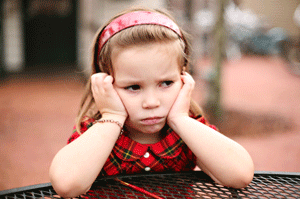
- Oppositional defiant disorder or conduct disorder—Up to 35% of children with ADHD also have oppositional defiant disorder or conduct disorder. Children with oppositional defiant disorder tend to lose their temper easily and annoy people on purpose and are defiant and hostile toward authority figures. Children with conduct disorder break rules, destroy property, and violate the rights of other people. Children with coexisting conduct disorder are at much higher risk for getting into trouble with the law than children who have only ADHD. Studies show that this type of coexisting condition is more common among children with the primarily hyperactive/impulsive and combination types of ADHD. Your pediatrician may recommend counseling for your child if she has this condition.
- Mood disorders/depression—About 18% of children with ADHD also have mood disorders such as depression. There is frequently a family history of these types of disorders. Coexisting mood disorders may put children at higher risk for suicide, especially during the teenage years. These disorders are more common among children with inattentive and combined types of ADHD. Children with mood disorders or depression often require a different type of medication than those normally used to treat ADHD.
- Anxiety disorders—These affect about 25% of children with ADHD. Children with anxiety disorders have extreme feelings of fear, worry, or panic that make it difficult to function. These disorders can produce physical symptoms such as racing pulse, sweating, diarrhea, and nausea. Counseling and/or medication may be needed to treat these coexisting conditions.
- Learning disabilities—Learning disabilities are conditions that make it difficult for a child to master specific skills such as reading or math. ADHD is not a learning disability. However, ADHD can make it hard for a child to do well in school. Diagnosing learning disabilities requires evaluations such as IQ and academic achievement tests.
Treatment

- A long-term management plan with:
- Target outcomes for behavior
- Follow-up activities
- Monitoring
- Education about ADHD
- Team work among doctors, parents, teachers, caregivers, other healthcare professionals, and the child
- Medication
- Behavior therapy
- Parent training
- Individual and family counseling
Treatment for ADHD uses the same principles that are used to treat other chronic conditions like asthma or diabetes. Long-term planning is needed because these conditions continue or recur for a long time. Families must manage them on an ongoing basis. In the case of ADHD, schools and other caregivers must also be involved in managing the condition. Educating the people involved with your child about ADHD is a key part of treating your child. As a parent, you will need to learn about ADHD. Read about the condition and talk to people who understand it. This will help you manage the ways ADHD affects your child and your family on a day-to-day basis. It will also help your child learn to help himself.
Medication
For most children, stimulant medications are a safe and effective way to relieve ADHD symptoms. As glasses help people focus their eyes to see, these medications help children with ADHD focus their thoughts better and ignore distractions. This makes them more able to pay attention and control their behavior. Stimulants may be used alone or combined with behavior therapy. Studies show that about 80% of children with ADHD who are treated with stimulants improve a great deal.
Different types of stimulants are available, in both short-acting (immediate-release) and long-acting forms. Short- acting forms usually are taken every 4 hours when the medication is needed. Long-acting medications usually are taken once in the morning. Children who use long-acting forms of stimulants can avoid taking medication at school or after school.
It may take some time to find the best medication, dosage, and schedule for your child. Your child may need to try different types of stimulants. Some children respond to one type of stimulant but not another. The amount of medication (dosage) that your child needs also may need to be adjusted. Realize that the dosage of the medicine is not based solely on your child weight. Our goal is for your child to be on the dose that is helping her to maximize her potential with the least amount of side effects.
The medication schedule also may be adjusted depending on the target outcome. For example, if the goal is to get relief from symptoms at school, your child may take the medication only on school days and none during weekends, summer time, and vacations if desired. Your child will have close follow up initially and once the optimal medication and dosage is found she will be seen every 2-3 months to monitor progress and possible side effects.
What side effects can stimulants cause?
Side effects occur sometimes. These tend to happen early in treatment and are usually mild and short-lived. The most common side effects include the following:
Decreased appetite/weight loss.
- Sleep problems
- Headaches
- Stomachaches
Some less common side effects include the following:
- Dry mouth
- Jitteriness
- Social withdrawal
- Dizziness
- Rebound effect (increased activity or a bad mood as the medication wears off)
- Transient tics
Very rare side effects include the following:
- Stuttering
- Increase in blood pressure or heart rate
- Growth delay
Most side effects can be relieved using one of the following strategies:
- Changing the medication dosage
- Adjusting the schedule of medication
- Using a different stimulant
Behavior therapy
There are many forms of behavior therapy, but all have a common goal— to change the child’s physical and social environments to help the child improve his behavior. Under this approach, parents, teachers, and other caregivers learn better ways to work with and relate to the child with ADHD. You will learn how to set and enforce rules, help your child understand what he needs to do, use discipline effectively, and encourage good behavior. Your child will learn better ways to control his behavior as a result.
Behavior therapy has 3 basic principles:
- Set specific goals. Set clear goals for your child such as staying focused on homework for a certain time or sharing toys with friends.
- Provide rewards and consequences. Give your child a specified reward (positive reinforcement) when she shows the desired behavior. Give your child a consequence (unwanted result or punishment) when she fails to meet a goal.
- Keep using the rewards and consequences. Using the rewards and consequences consistently for a long time will shape your child’s behavior in a positive way.
Behavior therapy recognizes the limits that having ADHD puts on a child. It focuses on how the important people and places in the child’s life can adapt to encourage good behavior and discourage unwanted behavior. It is different from play therapy or other therapies that focus mainly on the child and his emotions.
Specific behavior therapy techniques that can be effective with children with ADHD include:
- Positive reinforcement: Parents provide rewards or privileges in response to desired behavior. For example, your child completes an assignment and he is permitted to play on the computer.
- Time-out: one removes access to desired activity because of unwanted behavior. For example, your child hits a sibling and, as a result, must sit for 5 minutes in the corner of the room.
- Response cost: Parents withdraw rewards or privileges because of unwanted behavior. For example, your child loses free-time privileges for not completing homework.
- Token economy: Combining reward and consequence. The child earns rewards and privileges when performing desired behaviors. He loses the rewards and privileges as a result of unwanted behavior. For example, you child can earn stars for completing assignments and loses stars for getting out of seat. Then, he cashes in the sum of her stars at the end of the week for a prize.
 Tips for helping your child control his behavior
Tips for helping your child control his behavior
- Keep your child on a daily schedule. Try to keep the time that your child wakes up, eats, bathes, leaves for school, and goes to sleep the same each day.
- Cut down on distractions. Loud music, computer games, and television can be over-stimulating to your child. Make it a rule to keep the TV or music off during mealtime and while your child is doing homework. Whenever possible, avoid taking your child to places that may be too stimulating, like busy shopping malls.
- Organize your house. If your child has specific and logical places to keep his schoolwork, toys, and clothes, he is less likely to lose them. Save a spot near the front door for his school backpack so he can grab it on the way out the door.
- Reward positive behavior. Offer kind words, hugs, or small prizes for reaching goals in a timely manner or good behavior. Praise and reward your child’s efforts to pay attention.
- Set small, reachable goals. Aim for slow progress rather than instant results. Be sure that your child understands that he can take small steps toward learning to control himself.
- Help your child stay “on task.” Use charts and checklists to track progress with homework or chores. Keep instructions brief. Offer frequent, friendly reminders.
- Limit choices. Help your child learn to make good decisions by giving your child only 2 or 3 options at a time.
- Find activities at which your child can succeed. All children need to experience success to feel good about themselves and boost their self-confidence.
- Use calm discipline. Use consequences such as time-out, removing the child from the situation, or distraction. Sometimes it is best to simply ignore the behavior. Physical punishment, such as spanking or slapping, is not helpful. Discuss your child’s behavior with him when both of you are calm.
How can I help my child control her behavior?

Taking care of yourself also will help your child. Being the parent of a child with ADHD can be tiring and trying. It can test the limits of even the best parents. Parent training and support groups made up of other families who are dealing with ADHD can be a great source of help. Learn stress-management techniques to help you respond calmly to your child. Seek counseling if you feel overwhelmed or hopeless.
Ask us to help you find parent training, counseling, and support groups in your community. Under the resources section we will leave the link of a few handouts published by the NICHQ (National Initiative for Children’s Healthcare Quality) including:
Unproven treatments
You may have heard media reports or seen advertisements for “miracle cures” for ADHD. Carefully research any such claims. Consider whether the source of the information is valid. At this time, there is no scientifically proven cure for this condition. The following methods have not been proven to work in scientific studies:
- Optometric vision training (asserts that faulty eye movement and sensitivities cause the behavior problems)
- Megavitamins and mineral supplements
- Anti–motion-sickness medication (to treat the inner ear)
- Treatment for candida yeast infection
- EEG biofeedback (training to increase brain-wave activity)
- Applied kinesiology (realigning bones in the skull)
Always tell your pediatrician about any alternative therapies, supplements, or medications that your child is using. These may interact with prescribed medications and harm your child.
Frequently asked questions
 Will my child outgrow ADHD?
Will my child outgrow ADHD?
ADHD continues into adulthood in most cases. However, by developing their strengths, structuring their environments, and using medication when needed, adults with ADHD can lead very productive lives. In some careers, having a high-energy behavior pattern can be an asset.
Are stimulant medications “gateway drugs” leading to illegal drug or alcohol abuse?
People with ADHD are naturally impulsive and tend to take risks. But those with ADHD who are taking stimulants are actually at lower risk of using other drugs. Children and teenagers who have ADHD and also have coexisting conditions may be at high risk for drug and alcohol abuse, regardless of the medication used.
Are children getting high on stimulant medications?
There is no evidence that children are getting high on stimulant drugs used to treat ADHD. These drugs also do not sedate or tranquilize children and have no addictive properties. Stimulants are classified as Schedule II drugs by the US Drug Enforcement Administration. There are recent reports of abuse of this class of medication, especially by college students who trying to obtain an edge during exam times to stay up and study more. If your child is on medication, it is always best to supervise the use of the medication closely.
Why do so many children have ADHD?
The number of children who are being treated for ADHD has risen. It is not clear whether more children have ADHD or more children are being diagnosed with ADHD. ADHD is now one of the most common and most studied conditions of childhood. Because of more awareness and better ways of diagnosing and treating this disorder, more children are being helped.
Resources:
- AAP (American Academy of Pediatrics)
- About Our Kids (from NYU Child Study Center)
- Children and Adults with Attention-Deficit/Hyperactivity Disorder (CHADD)
Adapted directly from
- American Academy of Pediatrics
- The Zukerman Parker Handbook of Development and Behavioral Pediatrics for Primary care

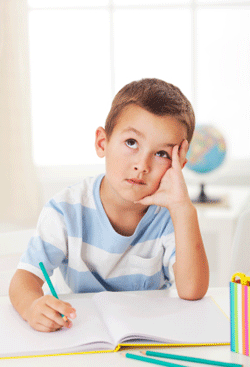 What are the symptoms of ADHD?
What are the symptoms of ADHD?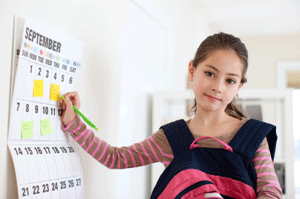 Tips for helping your child control his behavior
Tips for helping your child control his behavior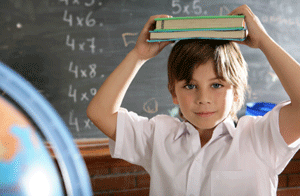 Will my child outgrow ADHD?
Will my child outgrow ADHD?